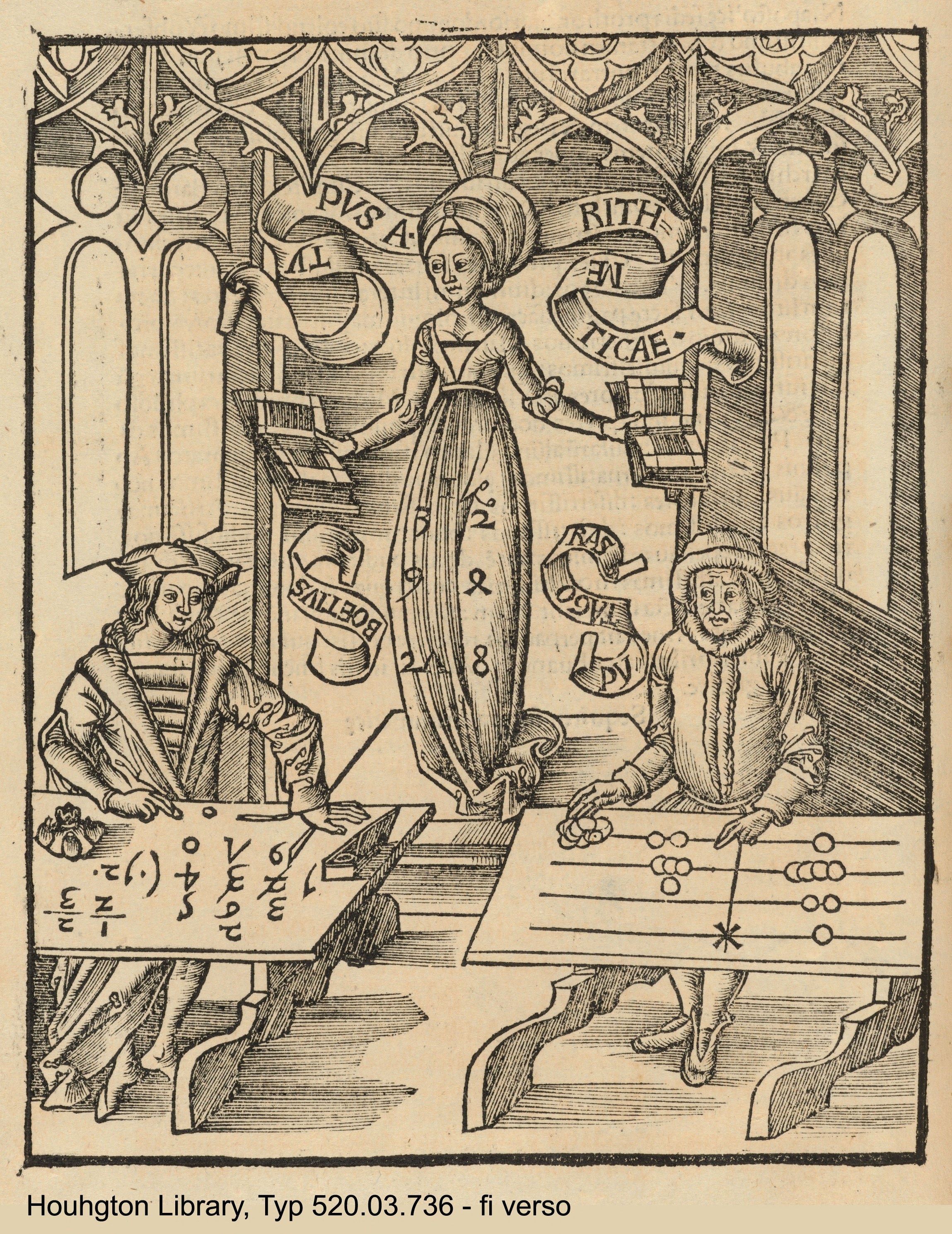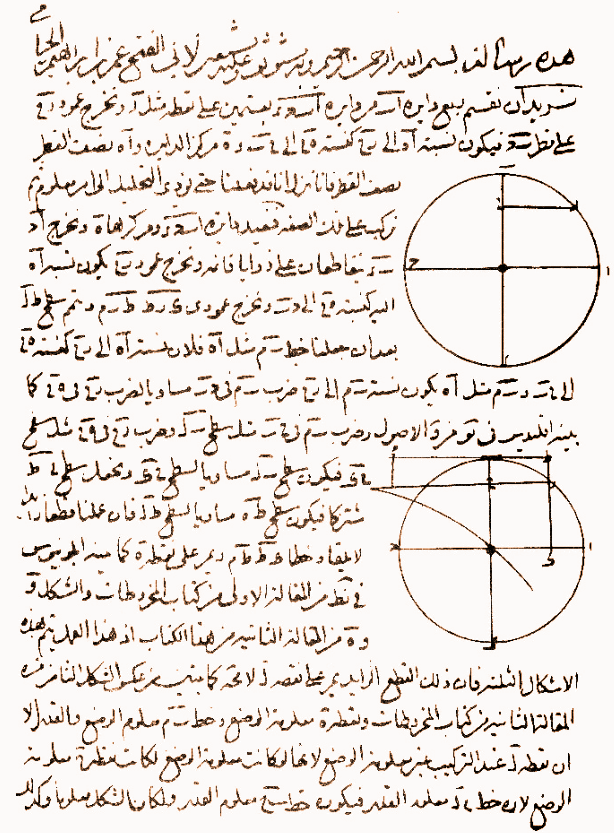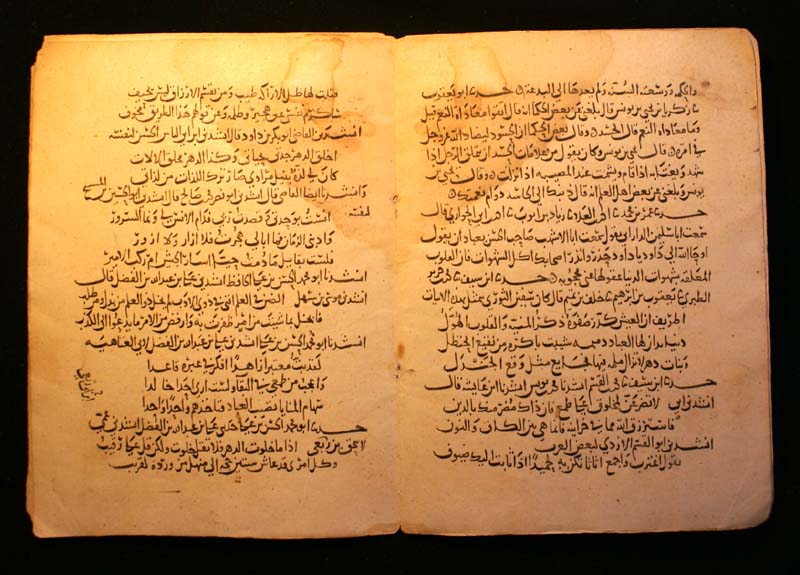|
Khwārizmī
Muhammad ibn Musa al-Khwarizmi , or simply al-Khwarizmi, was a mathematician active during the Islamic Golden Age, who produced Arabic-language works in mathematics, astronomy, and geography. Around 820, he worked at the House of Wisdom in Baghdad, the contemporary capital city of the Abbasid Caliphate. One of the most prominent scholars of the period, his works were widely influential on later authors, both in the Islamic world and Europe. His popularizing treatise on algebra, compiled between 813 and 833 as ''Al-Jabr'' (''The Compendious Book on Calculation by Completion and Balancing''),Oaks, J. (2009), "Polynomials and Equations in Arabic Algebra", ''Archive for History of Exact Sciences'', 63(2), 169–203. presented the first systematic solution of linear and quadratic equations. One of his achievements in algebra was his demonstration of how to solve quadratic equations by completing the square, for which he provided geometric justifications. Because al-Khwarizmi was t ... [...More Info...] [...Related Items...] OR: [Wikipedia] [Google] [Baidu] |
Mathematics In The Medieval Islamic World
Mathematics during the Golden Age of Islam, especially during the 9th and 10th centuries, was built upon syntheses of Greek mathematics (Euclid, Archimedes, Apollonius) and Indian mathematics (Aryabhata, Brahmagupta). Important developments of the period include extension of the place-value system to include decimal fractions, the systematised study of algebra and advances in geometry and trigonometry. The medieval Islamic world underwent significant developments in mathematics. Muhammad ibn Musa al-Khwārizmī played a key role in this transformation, introducing algebra as a distinct field in the 9th century. Al-Khwārizmī's approach, departing from earlier arithmetical traditions, laid the groundwork for the arithmetization of algebra, influencing mathematical thought for an extended period. Successors like Al-Karaji expanded on his work, contributing to advancements in various mathematical domains. The practicality and broad applicability of these mathematical metho ... [...More Info...] [...Related Items...] OR: [Wikipedia] [Google] [Baidu] |
Geography And Cartography In The Medieval Islamic World
Medieval Islamic geography and cartography refer to the study of geography and cartography in the Muslim world during the Islamic Golden Age (variously dated between the 8th century and 16th century). Muslim scholars made advances to the map-making traditions of earlier cultures, explorers and merchants learned in their travels across the Old World (Afro-Eurasia). Islamic geography had three major fields: exploration and navigation, physical geography, and cartography and mathematical geography. Islamic geography reached its apex with Muhammad al-Idrisi in the 12th century. History 8th and 9th century Islamic geography began in the 8th century, influenced by Hellenistic geography, combined with what explorers and merchants learned in their travels across the Old World (Afro-Eurasia). Muslim scholars engaged in extensive exploration and navigation during the 9th-12th centuries, including journeys across the Muslim world, in addition to regions such as China, Southeast Asia and ... [...More Info...] [...Related Items...] OR: [Wikipedia] [Google] [Baidu] |
Algorism
Algorism is the technique of performing basic arithmetic by writing numbers in place value form and applying a set of memorized rules and facts to the digits. One who practices algorism is known as an algorist. This positional notation system has largely superseded earlier calculation systems that used a different set of symbols for each numerical magnitude, such as Roman numerals, and in some cases required a device such as an abacus. Etymology The word ''algorism'' comes from the name Al-Khwārizmī (c. 780–850), a Persian mathematician, astronomer, geographer and scholar in the House of Wisdom in Baghdad, whose name means "the native of Khwarezm", which is now in modern-day Uzbekistan. He wrote a treatise in Arabic language in the 9th century, which was translated into Latin in the 12th century under the title ''Algoritmi de numero Indorum''. This title means "Algoritmi on the numbers of the Indians", where "Algoritmi" was the translator's Latinization of Al ... [...More Info...] [...Related Items...] OR: [Wikipedia] [Google] [Baidu] |
Al-Jabr
''The Concise Book of Calculation by Restoration and Balancing'' (, ;} or ), commonly abbreviated ''Al-Jabr'' or ''Algebra'' (Arabic: ), is an Arabic mathematical treatise on algebra written in Baghdad around 820 by the Persian polymath Al-Khwarizmi. It was a landmark work in the history of mathematics, with its title being the ultimate etymology of the word "algebra" itself, later borrowed into Medieval Latin as . ''Al-Jabr'' provided an exhaustive account of solving for the positive roots of polynomial equations up to the second degree. It was the first text to teach elementary algebra, and the first to teach algebra for its own sake. It also introduced the fundamental concept of "reduction" and "balancing" (which the term ''al-jabr'' originally referred to), the transposition of subtracted terms to the other side of an equation, i.e. the cancellation of like terms on opposite sides of the equation. The mathematics historian Victor J. Katz regards ''Al-Jabr'' as the first t ... [...More Info...] [...Related Items...] OR: [Wikipedia] [Google] [Baidu] |
Abbasid Caliphate
The Abbasid Caliphate or Abbasid Empire (; ) was the third caliphate to succeed the Islamic prophet Muhammad. It was founded by a dynasty descended from Muhammad's uncle, Abbas ibn Abd al-Muttalib (566–653 CE), from whom the dynasty takes its name. After overthrowing the Umayyad Caliphate in the Abbasid Revolution of 750 CE (132 AH), they ruled as caliphs based in modern-day Iraq, with Baghdad being their capital for most of their history. The Abbasid Revolution had its origins and first successes in the easterly region of Khurasan, far from the Levantine center of Umayyad influence. The Abbasid Caliphate first centered its government in Kufa, modern-day Iraq, but in 762 the caliph al-Mansur founded the city of Baghdad as the new capital. Baghdad became the center of science, culture, arts, and invention in what became known as the Golden Age of Islam. By housing several key academic institutions, including the House of Wisdom, as well as a multiethnic and multi- ... [...More Info...] [...Related Items...] OR: [Wikipedia] [Google] [Baidu] |
Islamic Golden Age
The Islamic Golden Age was a period of scientific, economic, and cultural flourishing in the history of Islam, traditionally dated from the 8th century to the 13th century. This period is traditionally understood to have begun during the reign of the Abbasid Caliphate, Abbasid caliph Harun al-Rashid (786 to 809) with the inauguration of the House of Wisdom, which saw Ulama, scholars from all over the Muslim world flock to Baghdad, the world's largest city at the time, to translate the known world's classical knowledge into Arabic and Persian language, Persian. The period is traditionally said to have ended with the collapse of the Abbasid caliphate due to Mongol invasions and conquests, Mongol invasions and the Siege of Baghdad (1258), Siege of Baghdad in 1258. There are a few alternative timelines. Some scholars extend the end date of the golden age to around 1350, including the Timurid Renaissance within it, while others place the end of the Islamic Golden Age as late as the en ... [...More Info...] [...Related Items...] OR: [Wikipedia] [Google] [Baidu] |
Algebra
Algebra is a branch of mathematics that deals with abstract systems, known as algebraic structures, and the manipulation of expressions within those systems. It is a generalization of arithmetic that introduces variables and algebraic operations other than the standard arithmetic operations, such as addition and multiplication. Elementary algebra is the main form of algebra taught in schools. It examines mathematical statements using variables for unspecified values and seeks to determine for which values the statements are true. To do so, it uses different methods of transforming equations to isolate variables. Linear algebra is a closely related field that investigates linear equations and combinations of them called '' systems of linear equations''. It provides methods to find the values that solve all equations in the system at the same time, and to study the set of these solutions. Abstract algebra studies algebraic structures, which consist of a set of mathemati ... [...More Info...] [...Related Items...] OR: [Wikipedia] [Google] [Baidu] |
Hindu–Arabic Numeral System
The Hindu–Arabic numeral system (also known as the Indo-Arabic numeral system, Hindu numeral system, and Arabic numeral system) is a positional notation, positional Decimal, base-ten numeral system for representing integers; its extension to non-integers is the decimal, decimal numeral system, which is presently the most common numeral system. The system was invented between the 1st and 4th centuries by Indian mathematics, Indian mathematicians. By the 9th century, the system was adopted by Arabic mathematics, Arabic mathematicians who extended it to include fraction (mathematics), fractions. It became more widely known through the writings in Arabic of the Persian mathematician Al-Khwārizmī (''On the Calculation with Hindu Numerals'', ) and Arab mathematician Al-Kindi (''On the Use of the Hindu Numerals'', ). The system had spread to medieval Europe by the High Middle Ages, notably following Fibonacci's 13th century ''Liber Abaci''; until the evolution of the printing pre ... [...More Info...] [...Related Items...] OR: [Wikipedia] [Google] [Baidu] |
Abu Kamil
Abū Kāmil Shujāʿ ibn Aslam ibn Muḥammad Ibn Shujāʿ ( Latinized as Auoquamel, , also known as ''Al-ḥāsib al-miṣrī''—lit. "The Egyptian Calculator") (c. 850 – c. 930) was a prominent Egyptian mathematician during the Islamic Golden Age. He is considered the first mathematician to systematically use and accept irrational numbers as solutions and coefficients to equations. His mathematical techniques were later adopted by Fibonacci, thus allowing Abu Kamil an important part in introducing algebra to Europe. Abu Kamil made important contributions to algebra and geometry. He was the first Islamic mathematician to work easily with algebraic equations with powers higher than x^2 (up to x^8), and solved sets of non-linear simultaneous equations with three unknown variables. He illustrated the rules of signs for expanding the multiplication (a \pm b)(c \pm d). He wrote all problems rhetorically, and some of his books lacked any mathematical notation beside those of in ... [...More Info...] [...Related Items...] OR: [Wikipedia] [Google] [Baidu] |
Nicolo Tartaglia
Nicolo, known as Tartaglia (; 1499/1500 – 13 December 1557), was an Italian mathematician, engineer (designing fortifications), a surveyor (of topography, seeking the best means of defense or offense) and a bookkeeper from the then Republic of Venice. He published many books, including the first Italian translations of Archimedes and Euclid, and an acclaimed compilation of mathematics. Tartaglia was the first to apply mathematics to the investigation of the paths of cannonballs, known as ballistics, in his ''Nova Scientia'' (''A New Science'', 1537); his work was later partially validated and partially superseded by Galileo's studies on falling bodies. He also published a treatise on retrieving sunken ships. Personal life Nicolo was born in Brescia, the son of Michele, a dispatch rider who travelled to neighbouring towns to deliver mail. In 1506, Michele was murdered by robbers, and Nicolo, his two siblings, and his mother were left impoverished. Nicolo experienced further ... [...More Info...] [...Related Items...] OR: [Wikipedia] [Google] [Baidu] |
House Of Wisdom
The House of Wisdom ( ), also known as the Grand Library of Baghdad, was believed to be a major Abbasid Caliphate, Abbasid-era public academy and intellectual center in Baghdad. In popular reference, it acted as one of the world's largest public libraries during the Islamic Golden Age, and was founded either as a library for the collections of the fifth Abbasid caliph Harun al-Rashid () in the late 8th century or as a private collection of the second Abbasid caliph al-Mansur () to house rare books and collections in the Arabic language. During the reign of the seventh Abbasid caliph al-Ma'mun (), it was turned into a public academy and a library. ISBN 978-0521838245 It was destroyed in 1258 during the Siege of Baghdad (1258), Mongol siege of Baghdad. The primary sources behind the House of Wisdom narrative date between the late eight centuries and thirteenth centuries, and most importantly include the references in Ibn al-Nadim's (d. 995) ''al-Fihrist''. More recently, the nar ... [...More Info...] [...Related Items...] OR: [Wikipedia] [Google] [Baidu] |
Algorithm
In mathematics and computer science, an algorithm () is a finite sequence of Rigour#Mathematics, mathematically rigorous instructions, typically used to solve a class of specific Computational problem, problems or to perform a computation. Algorithms are used as specifications for performing calculations and data processing. More advanced algorithms can use Conditional (computer programming), conditionals to divert the code execution through various routes (referred to as automated decision-making) and deduce valid inferences (referred to as automated reasoning). In contrast, a Heuristic (computer science), heuristic is an approach to solving problems without well-defined correct or optimal results.David A. Grossman, Ophir Frieder, ''Information Retrieval: Algorithms and Heuristics'', 2nd edition, 2004, For example, although social media recommender systems are commonly called "algorithms", they actually rely on heuristics as there is no truly "correct" recommendation. As an e ... [...More Info...] [...Related Items...] OR: [Wikipedia] [Google] [Baidu] |






